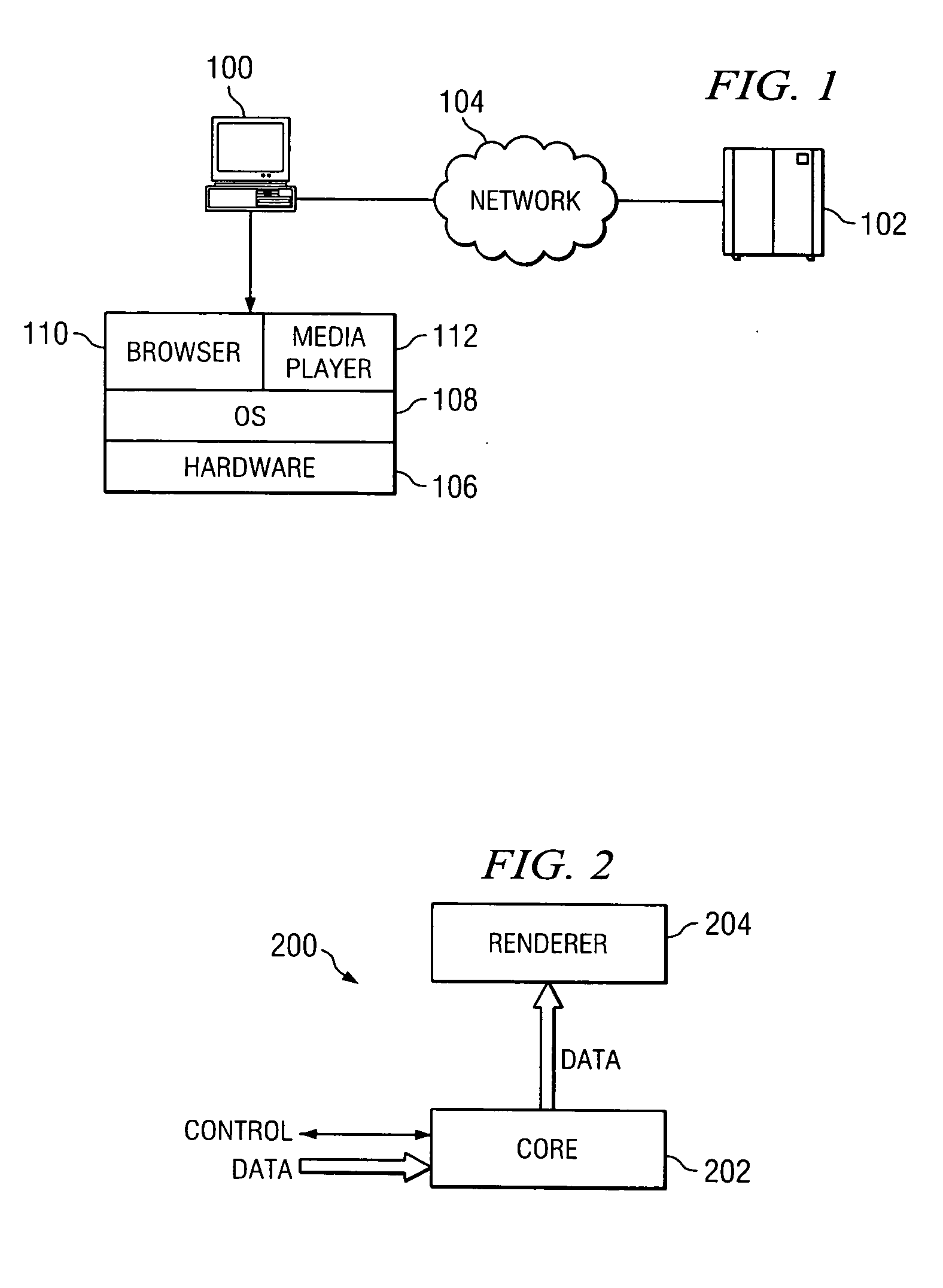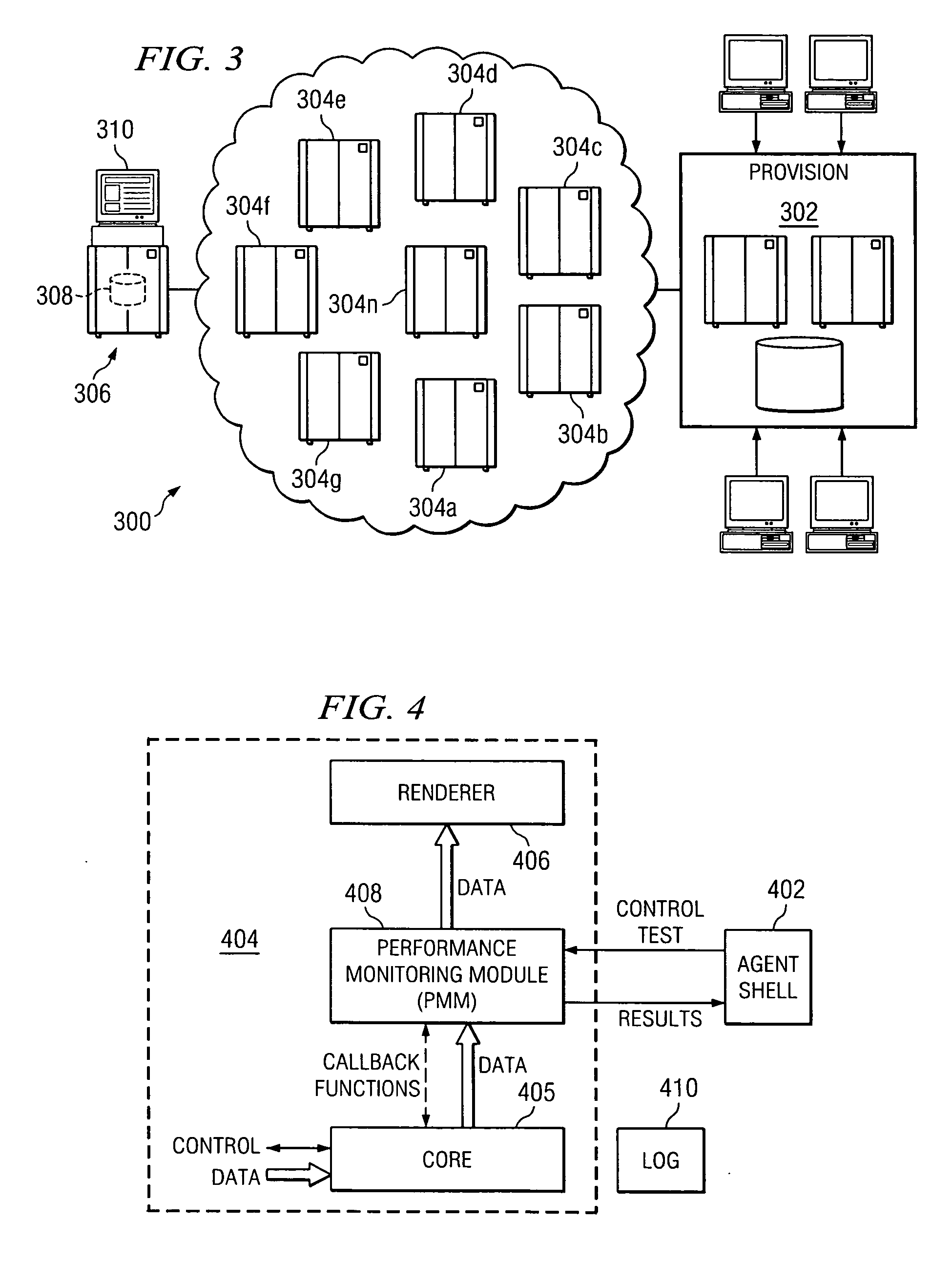Method and apparatus for measuring stream availability, quality and performance
a streaming media and quality technology, applied in the field of streaming media performance measurement, can solve the problems of stream degradation in significantly complex ways, difficult to effectively measure, and may not be a robust indicator of stream quality, and achieve the effect of high accuracy
- Summary
- Abstract
- Description
- Claims
- Application Information
AI Technical Summary
Benefits of technology
Problems solved by technology
Method used
Image
Examples
Embodiment Construction
[0024]FIG. 1 illustrates a conventional streaming delivery mechanism wherein a client machine 100 connects to a streaming media server 102 via a network 104, such as the Internet, an intranet, a content delivery network (CDN), or the like. The client machine is typically a computer having commodity hardware 106, operating system software 108, a Web browser 110, and a streaming media player 112. In a typical operation, an end user launches his or her browser to a Uniform Resource Locator (URL) identifying the media stream desired. Once the client is connected to the media server 102, the server delivers the stream over the network to the client browser, in which it is rendered by the media player. As illustrated in FIG. 2, streaming media player 200 typically includes two (2) primary components: a core 202, and a renderer 204. It should be noted that FIG. 2 is meant to provide a simplified view to illustrate the known player technology. In reality, an actual media player, such as Rea...
PUM
 Login to View More
Login to View More Abstract
Description
Claims
Application Information
 Login to View More
Login to View More - R&D
- Intellectual Property
- Life Sciences
- Materials
- Tech Scout
- Unparalleled Data Quality
- Higher Quality Content
- 60% Fewer Hallucinations
Browse by: Latest US Patents, China's latest patents, Technical Efficacy Thesaurus, Application Domain, Technology Topic, Popular Technical Reports.
© 2025 PatSnap. All rights reserved.Legal|Privacy policy|Modern Slavery Act Transparency Statement|Sitemap|About US| Contact US: help@patsnap.com



